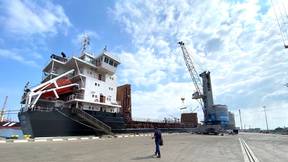New Study Projects $160 Billion Naval Market
Warfare: An Emerging Market for Ships & Systems, Stuart Slade of market research and publishing firm Forecast International projects that over the next decade, more than $160 billion will be spent worldwide on warships and their equipment as a result of the shifting worldwide emphasis from deep ocean to coastal and shallow water operations. This look at the likely structure of naval expenditures over the next decade brings together the operational, technical and financial implications of littoral warfare.
The study states that littoral regions have become extremely complex, multi-dimensional, threatening environments thatpresent entirely new tactical challenges to naval forces. Littoral mission profiles now extend far beyond combat operations to include maritime policing and even humanitarian tasks. The result is a key paradigm shift in naval doctrine that has implications for maritime forces in every size category. This extends beyond navies to include coast guard services, land-based maritime aircraft units and coastal defense forces.
Surprisingly, the latter is projected as becoming increasingly important, and much attention is devoted to the often neglected market offered by coastal defense weapons and systems.
Key to the study is a mathematical model that allows procurement programs to be broken down into expenditures on key areas such as hulls and machinery, weapons, radars, sonars, electronic warfare equipment and C4I systems. The analysis shows that littoral warfare is essentially a C4I problem, and that more than a quarter of the total expenditures will be devoted to improvements in this sector. The study also found that dramatic advances in civilian sector computer technology have strongly impacted the design of naval C4I systems, bringing the procurement of very capable systems within reach of even the smallest naval powers. The limitations of technological developments, such as air-independent propulsion for submarines and reduced signature "stealth" techniques for ships and aircraft, are explored, as well as the benefits they may confer. Some prevalent myths, such as the suggestion that smaller warships are somehow "the way of the future," are contradicted by detailed assessments of building programs and ship construction economics.




